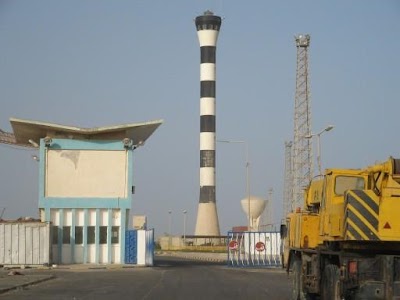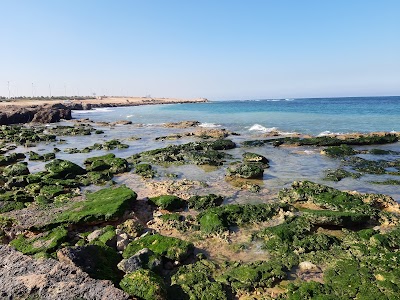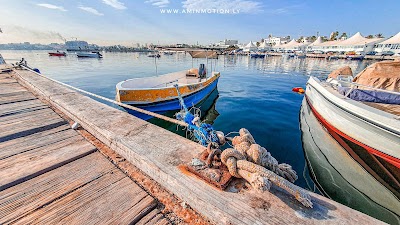Tripoli Lighthouse (منارة طرابلس)
Overview
Welcome to the enchanting city of Tripoli, the capital of Libya and home to the iconic Tripoli Lighthouse. Nestled along the stunning Mediterranean coastline, this towering beacon has guided seafaring vessels since the 19th century and continues to symbolize maritime heritage and historical significance.
The Tripoli Lighthouse, sometimes referred to as the Tripoli Harbour Lighthouse, was constructed during the Ottoman period in the mid-1800s. It stands as a testament to the city's rich naval history and its strategic importance as a Mediterranean port. Originally designed to aid in the safe navigation of ships approaching the bustling port of Tripoli, the lighthouse has undergone numerous changes over the years while retaining its essential purpose.
As you approach the lighthouse, you'll be greeted by its striking white cylindrical tower, stretching impressively high, making it easily visible from afar. The tower is accentuated by bold red bands, enhancing its picturesque charm against the backdrop of the azure Mediterranean Sea. The optical system inside the lighthouse has been modernized over the years, now utilizing advanced lighting technology to ensure its guiding light remains bright and reliable for ships navigating the coastal waters.
One of the most fascinating aspects of the Tripoli Lighthouse is its prime location within the old port area. This historic part of the city offers tourists a glimpse into the past, showcasing a blend of Ottoman architecture, ancient ruins, and bustling markets. A visit to the lighthouse is not just about marveling at the structure itself but also about soaking in the rich cultural tapestry of the surrounding area.
At the base of the lighthouse, you’ll find a small but informative museum. Here, visitors can delve into the history of the lighthouse and the broader maritime history of Tripoli. Exhibits include vintage navigational equipment, historical photographs, and detailed maps that showcase the evolution of the port and its significance to trade and commerce over the centuries.
For those interested in panoramic views, the climb to the top of the lighthouse is a must. A spiral staircase leads to the observation deck, where you’ll be rewarded with breathtaking vistas of the Mediterranean Sea and the city of Tripoli. It’s the perfect spot for photography enthusiasts looking to capture the beauty of the coastline and urban landscape.
Did you know that the Tripoli Lighthouse has also witnessed significant historical events? During World War II, the lighthouse served as a strategic lookout point, and it has survived numerous conflicts that have swept through the region. Its resilience is a metaphor for the enduring spirit of Tripoli and its people.
The lighthouse is also a favorite gathering spot for local artists and photographers, who often come to capture its timeless beauty. Whether bathed in the golden hues of sunset or standing proudly against the azure sky, the Tripoli Lighthouse offers countless opportunities for stunning visual experiences.
When planning your visit, it’s best to check the opening hours, as they vary throughout the year. Guided tours are available and highly recommended to enrich your experience. These tours often include fascinating anecdotes from knowledgeable guides who bring the history of the lighthouse and the port to life.
In conclusion, a visit to the Tripoli Lighthouse is more than just a sightseeing trip – it's a journey through time. Whether you're a history buff, a maritime enthusiast, or simply someone who appreciates stunning coastal views, the lighthouse promises a memorable experience. As you stand at the base of this grand structure, take a moment to reflect on the countless sailors it has guided safely home and the rich history it silently observes.
So, the next time you find yourself in Tripoli, make sure to visit this remarkable landmark. It’s an experience that illuminates not just the past but also the enduring beauty and resilience of a city that continues to shine brightly on the Mediterranean coast.






